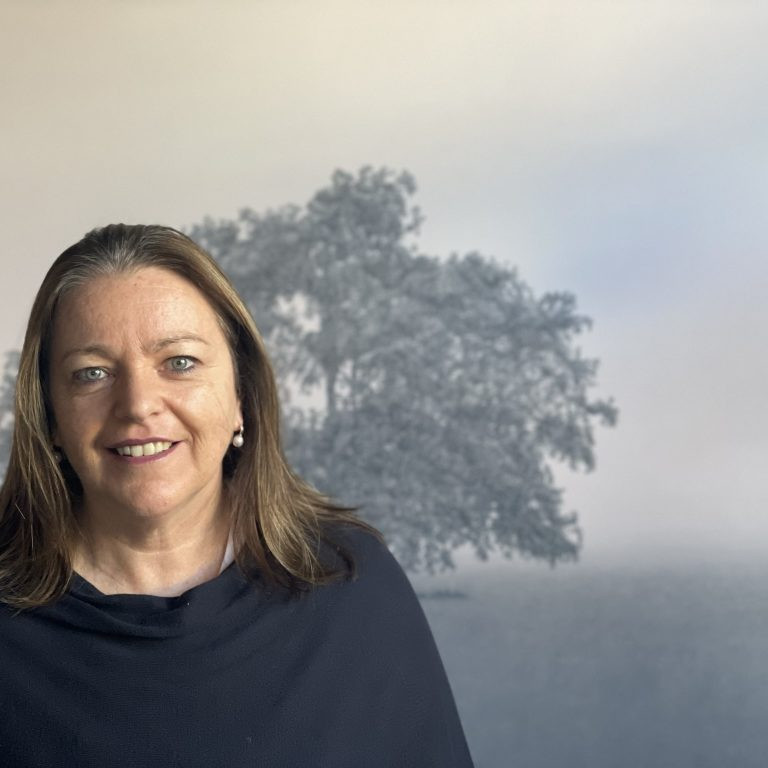Sherry Czekus Painter
What led you to paint everyday life?
Photographing the liveliness of city life and crowds of people is what led to my interest in painting everyday life. Figurative painting has always been a draw for me but not in a portraiture sense. The city crowd, in its simultaneous specificity and anonymity, became the subject matter of a kind of figurative painting that did not focus on individual identity. The crowd itself has become the single entity. Observational paintings of the everyday have generated fresh perspectives as I record the crowd and its progressive changes over time, particularly in fashion and electronic technology.
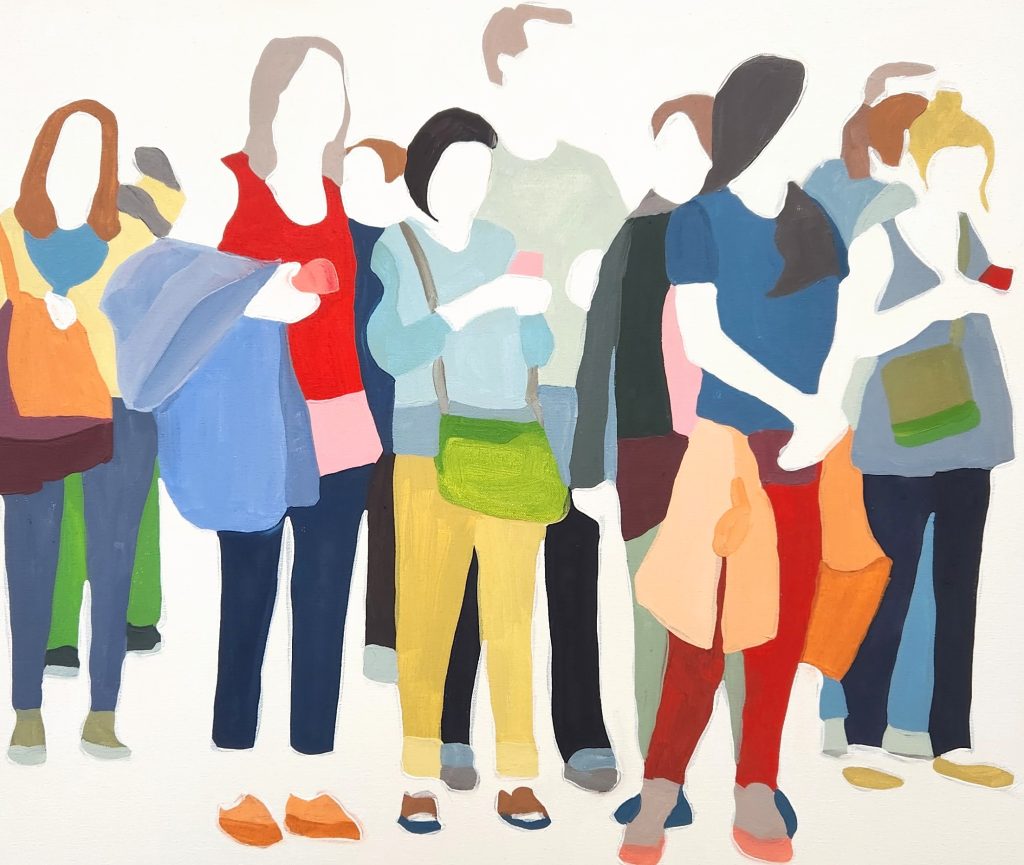 ‘A Peculiar Thing Happened’ 20 x 24cm
‘A Peculiar Thing Happened’ 20 x 24cm
Comment on physical crowds and how they been affected by Covid?
The most startling effect of Covid-19 was in the early days of the pandemic as safety measures were put in place globally, the urban crowd disappeared from the public domain. My paintings are depictions of people walking along the sidewalks and public walkways in the city and people were ordered to stay indoors except in necessary situations. As an artist, I was not one of the mandated types of workers who could work in this manner and even if I was, there was no one to photograph in my surroundings. Since the mandates have been dropped, my most recent excursions to capture the crowd have yielded very different results than the pre-pandemic urban scene. The crowds are fewer, less dense than before Covid-19.
Discuss one painting and how you have read the body language involved?
The body language in ‘On The Platform’ indicates the relationship between those in close proximity to each other while some are disconnected from the crowd engaged with their cellphone activity or simply watching for the next train.
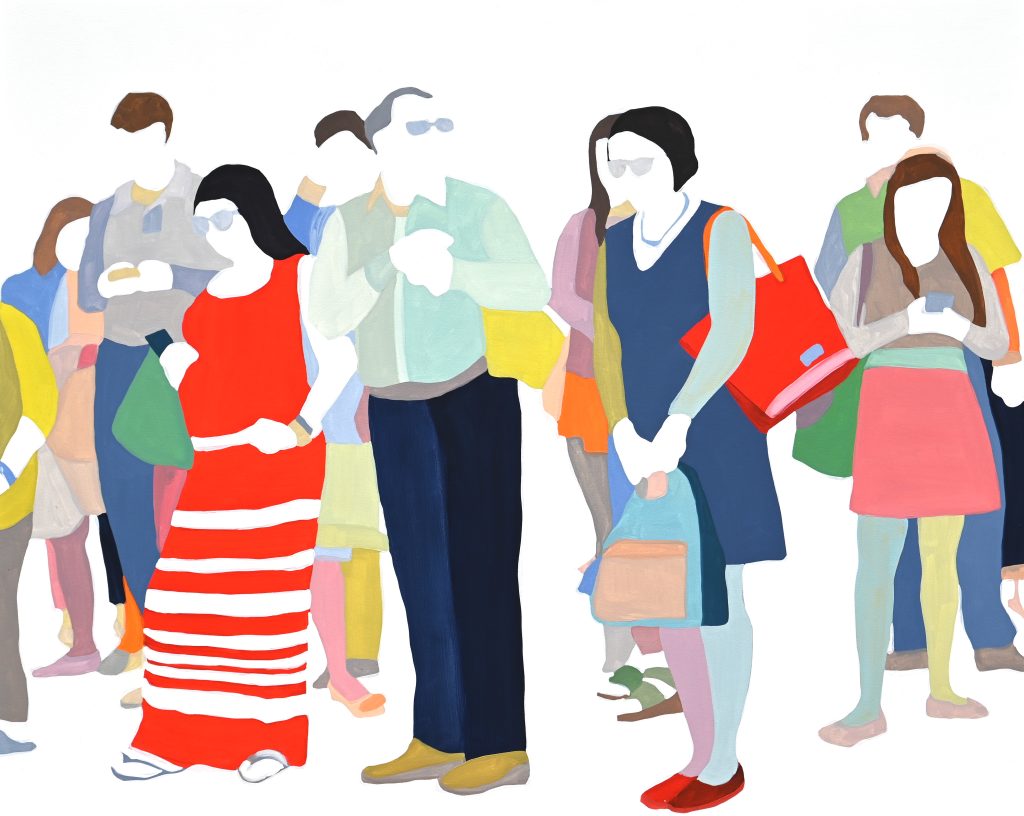 ‘On The Platform’ 60 x 48cm
‘On The Platform’ 60 x 48cm
I find the consistency in the distance each person stands apart from one another of interest. If people took the opportunity to acknowledge one another or start a conversation, they would be close enough to do so. And yet there is no obligation to do so. There seems to be a kind of order in establishing an area of personal space and social norms that’s unspoken yet understood as a public crowd participant.
Why are there no actual faces in your work?
The paintings aim to reveal the identity of the crowd as a whole rather than expose the identity of the individual. The lack of faces in the figures is a move to place the emphasis on the gesture of the bodies and how they interact together in social spaces and situations. I photograph the people in the crowds and its my way of protecting their privacy as the project intends to illustrate a social portrait of urban society. The gestures emerging in the group reveal something about all of us and the community develops an evolution of social behaviours by seeing each other and being seen publicly.
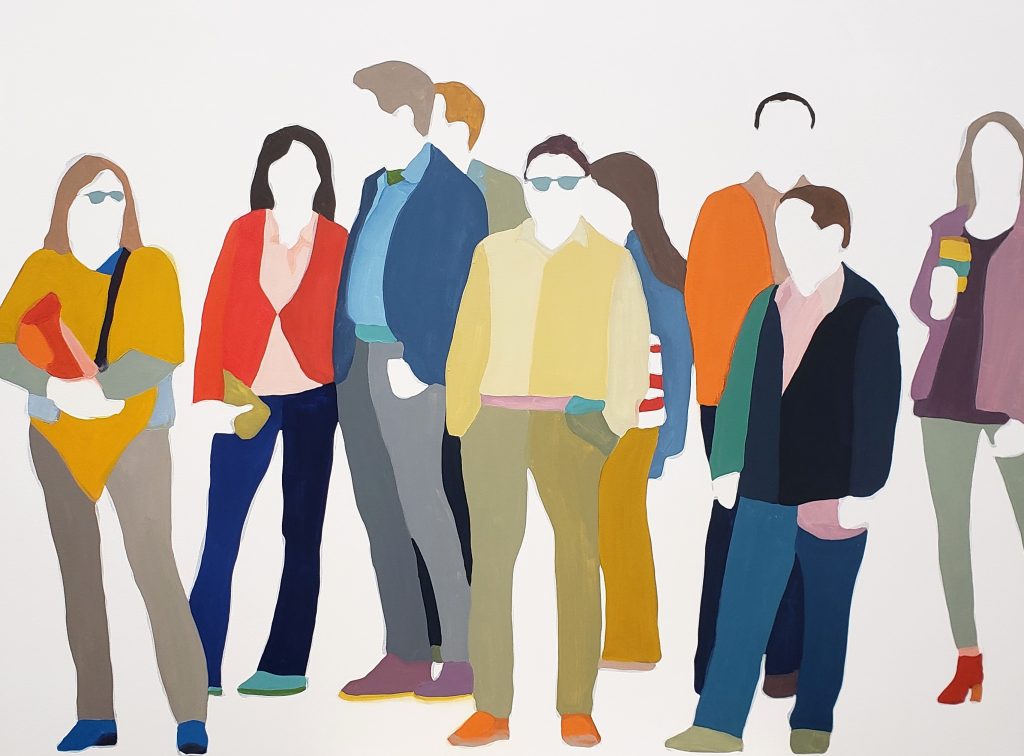 ‘Church and Wellington’ 36 x 48
‘Church and Wellington’ 36 x 48
Including faces in the paintings I fear would shift the focus to personal identity of the crowd members and would make the paintings less about gesture and the crowd as a whole.
Movement is shown in ‘City Life Study’, discuss.
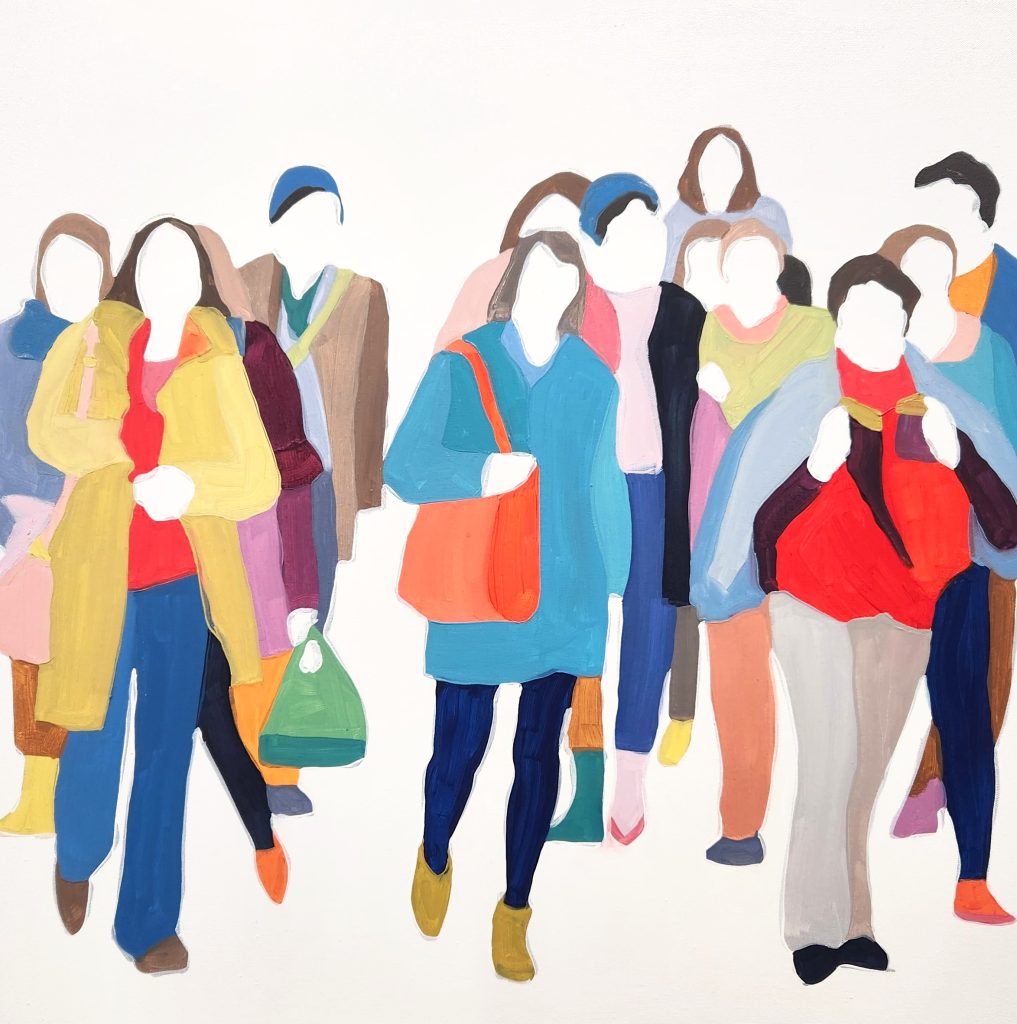
‘City Life Study’ #3, 24 x 24cm
The movement in ‘City Life Study’ is an illustration of the urban environmental structure and flow or rhythm of movement that the crowd walks within while walking on the sidewalks or crossing the street. The everyday experience of walking from one place to another is a public social happening in the downtown area of any large city. It could be running an errand on a lunch break or walking from public transit to a work space. To be swept up in the movement is energizing. The gesture and position of the feet of the figures in the paintings carries the feeling of the motion though the baseline of the canvas. The viewer is invited to experience the sense of being part of the crowd as it moves towards them or following the figures in front of them.
Comment on colour and your paintings.
Once I have chosen the composition to paint from the photographs I have recorded, the colours in the painting are determined as the painting develops. I choose a few colours to begin with and create a puzzle to be worked out compositionally through form and colour. The colour balance is intended to guide the viewer through the painting. The colour pathways are developed throughout the painting, placing lights and darks and specific shades strategically that make up the forms of the figures. You may notice chartreuse green appears in a linear pattern through the centre of the painting. It may be half of a shirt, a belt, one side of a bag, a bracelet and a jacket folded over an arm. Its meant to guide the viewer through the painting, to bring attention to the details of the figures. Red may be a tall boot, the top of a cell phone, one side of a collar or a scarf. Red can be lightened to pink with an added tinge of orange and placed beside the red to create a sense of volume in a bag, for example. The colour forms are flat and painted in a hardedge format in order to create a shallow space for the crowd to exist.
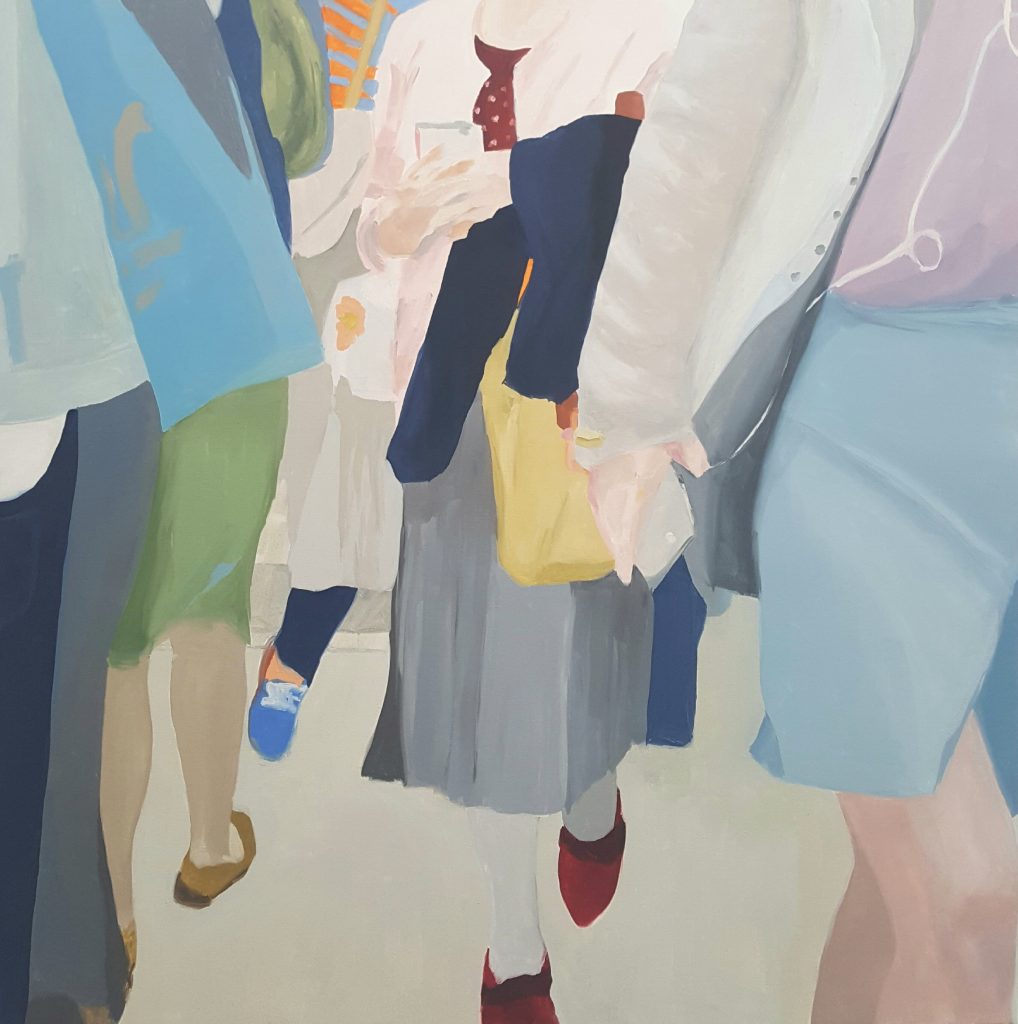
‘Crossing With The Light’ 48 x 48cm
Colour and colour theory are aspects of the paintings that I hope helps the viewer engage with the paintings as a way to look at ourselves and how we all are part of public engagement.
How is clothing so revealing in so many ways?
Clothing hints at various aspects in the urban crowd. The details of fashion can indicate the timeframe of the image when particular fashions in clothing and accessories have its moment and carry through to pair with new fashions. Short jackets with large lapels and tall boots with high heels or low heels paired with leggings or wide leg pants have all made an appearance recently. I’m not a fashionista but I do record these aspects. The public social sphere is an environment that influences fashion trends as people are present to see one another and to be seen, like the flaneur and flaneuse. Clothing can reveal cultural influences in terms of fashion trends and colours. The way one dresses can indicate a person’s type of employment or leisure activity. Wearing clothing publicly is a form of expression and communication that reveals visual clues about us individually and collectively as a community.
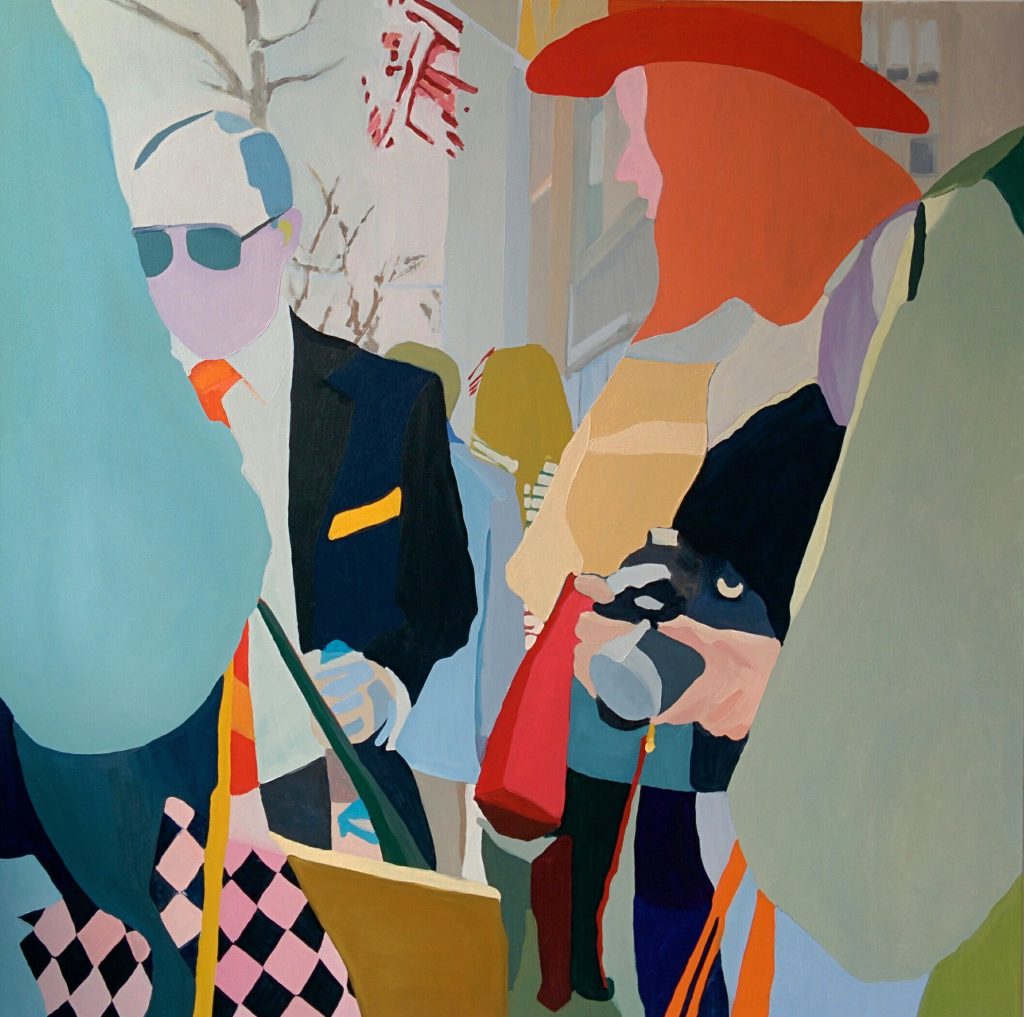 ‘Lexington Ave’ 60 x 60cm
‘Lexington Ave’ 60 x 60cm
In ‘Acquaintances’ the title makes us look more closely.
I titled the painting ‘Acquaintances’ as its difficult to determine the exact nature of the relationship of the figures in the painting.
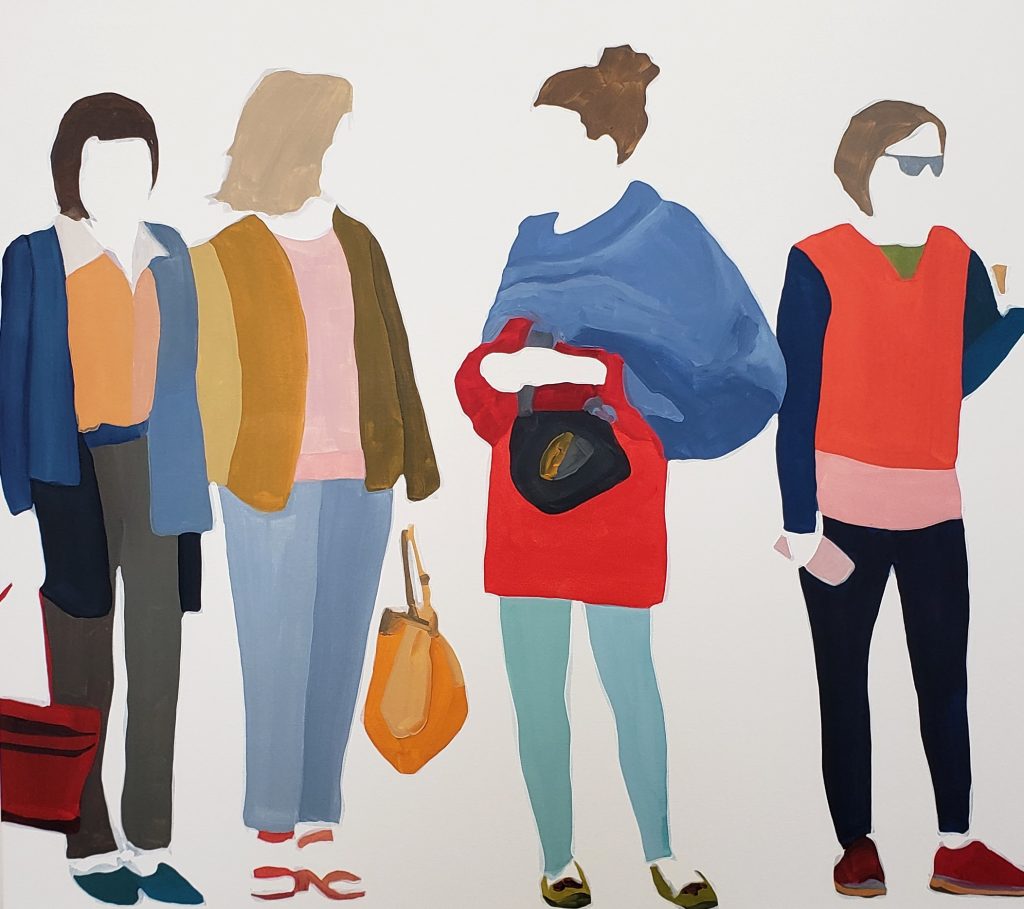 ‘Aquaintances’ 36 x 40cm
‘Aquaintances’ 36 x 40cm
Painting, as an act, is a pathway to knowledge and understanding about the subject and environment I am painting. It’s a slow and cumbersome process to paint something. The brush as a tool is not precise and the viscosity of the paint on the brush requires some negotiation between how long can you paint without reloading the brush and how accurately can you put down the mark you intend with the paint you have loaded on the brush. Mixing the paint colours falls in line here too. These are painters’ problems to work out. But the process of painting is a learning process. Every aspect of the image painted has been deliberately done so by the painter and so every aspect of the image is considered. I had a long time to study the figures in the image, thinking about their relationship to one another and this is what drew me to choosing the image for the painting. I could study the engagement between these people. I believe the painting poses more questions than provides answers. The engagement is friendly, but are the two central figures acting cordial to one another having never met? Is someone asking for directions? Or are they friends taking advantage of a stop light to have a deeper conversation? Do the others listen in on the conversation, particularly the female on the right? I’m not sure. The moment seems synchronous and fleeting and regardless of their relationship to each other, the connection of the moment was what drew me to paint it.
In your ‘Canadian Series’ you zoom in on the subjects. How do you make the discussion?
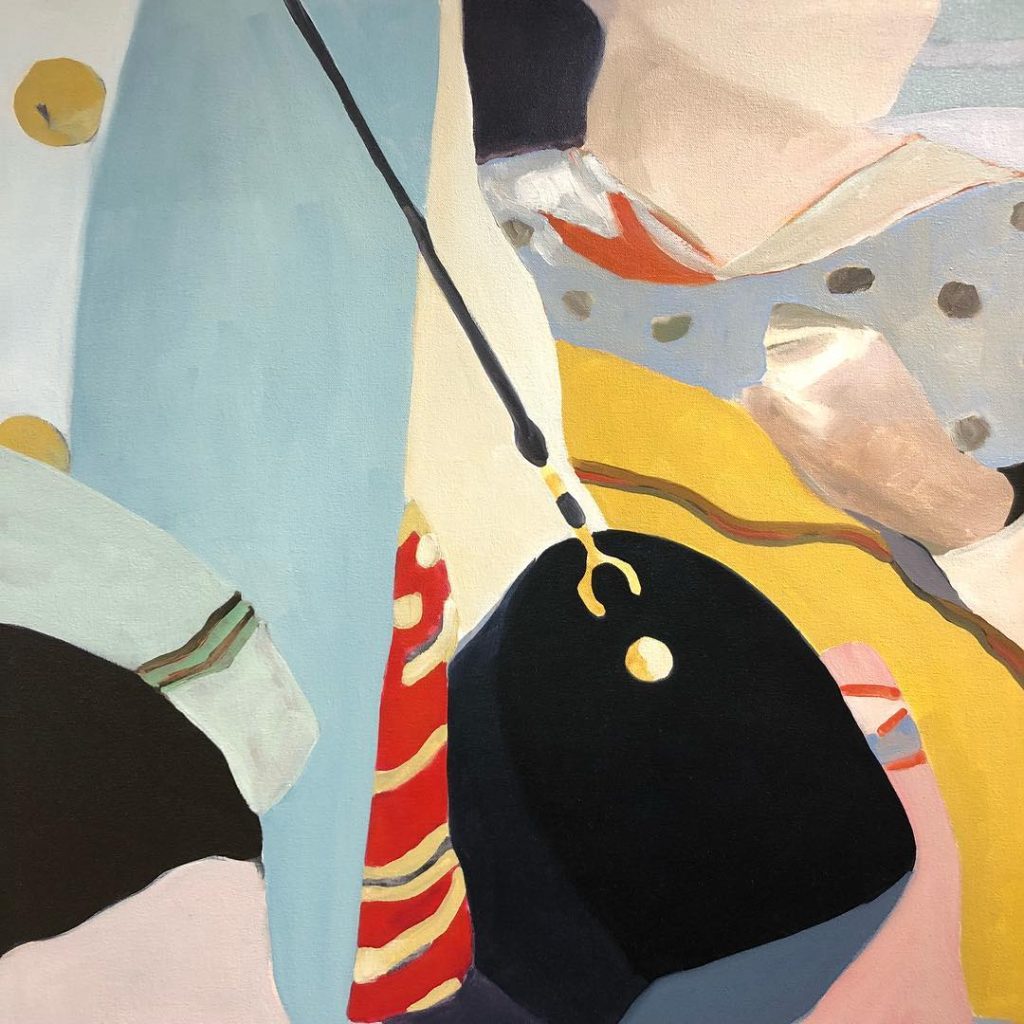 ‘Canadians’ #3 24 x 24cm
‘Canadians’ #3 24 x 24cm
The ‘Canadians Series’ is a series of abstract paintings that zoom in on the figures in the scene. The emphasis is not on the figure and relationships but instead a more formal approach to developing a series of paintings. Forms, patterns and colour tend to dominate the canvases in these paintings. The compositions are square, neither portrait or landscape and look at areas of clothing with intriguing patterns, bags with shiny accessories and the less obvious intersections of the figures in the crowd.
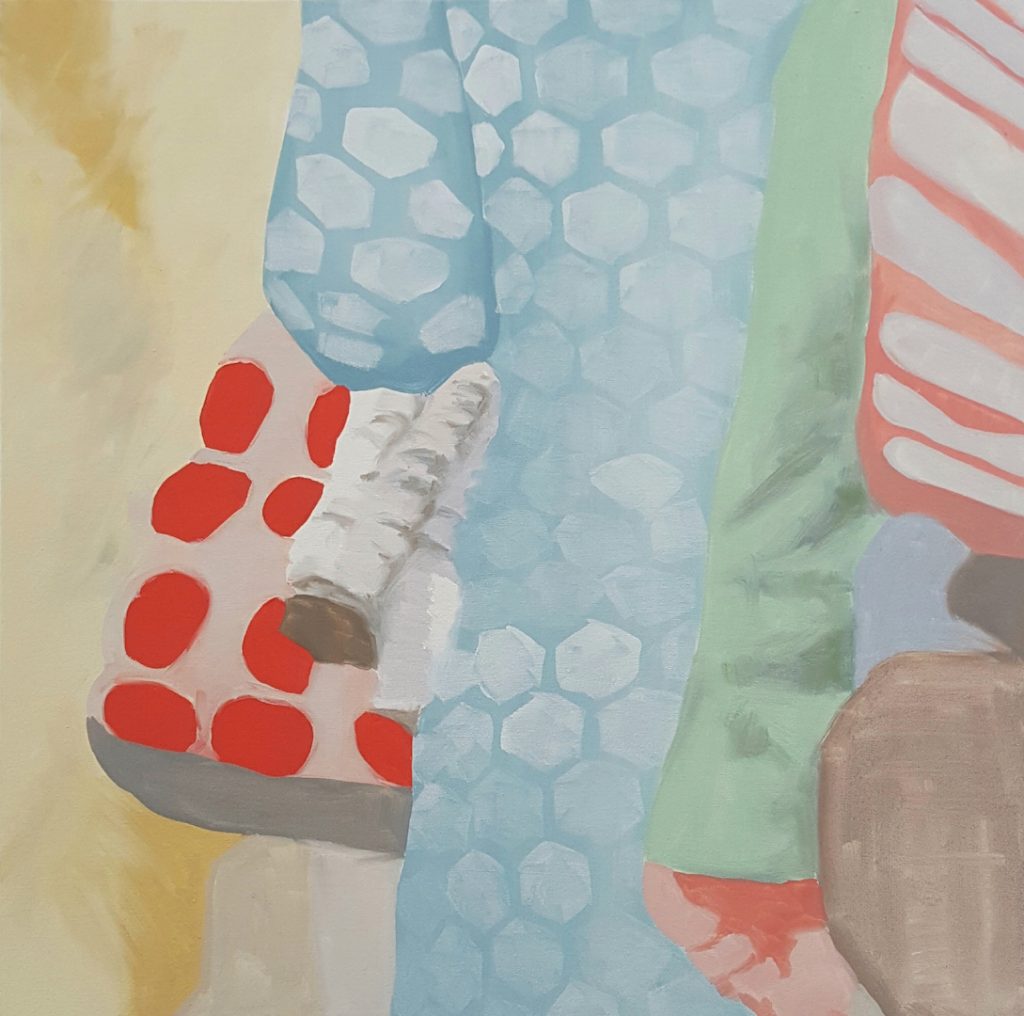 ‘Canadians’ #2, 24 x 24cm
‘Canadians’ #2, 24 x 24cm
Compositionally, I’m searching for balance in form and colour and problem solving that directly on the canvas. There is space to explore volume in the forms in these paintings with very thin paint brushed over the flat colour blocked forms. The images are from photographs taken in Canada and titling the series ‘Canadians’ allowed a clue that these abstract works are figurative.
‘In Line’ comment on how your images are like looking at a cross section rather than the whole?
The cross-section view in ‘In Line’ is a cropped digital photographic image of a line of pedestrians gathering at a red light and waiting for the signal to cross the street.

‘In Line’ digital image
The image crops the middle section of all the figures in a horizontal line. The centre of the action seems to be happening at this point. Bodies are turned, some are front facing, holding bags and purses, arms crossed and dangling. The gesture of the body is evident in the positioning of the legs. The viewer can get a sense of who these people are collectively without revealing the upper and lower portion of the body and I found this to be a compelling discovery. The forms that make up the colour of the clothing and accessories provide the flow and rhythm though the image. We can focus our attention the mass movement resembling a line dance rather than the identities of all of those who make up the scene. I think we can try to imagine ourselves as part of the crowd.
Contacts:
Sherry Czekus
sherryczekus.com
Sherry Czekus, Waterloo,ON, Canada
Interview by Deborah Blakeley, February, 2024
Images on this page are all rights reserved by Sherry Czekus
Think a colleague or friend could benefit from this interview?
Knowledge is one of the biggest assets in any business. So why not forward this on to your friends and colleagues so they too can start taking advantage of the insightful information the artist has given?
Other artists you may be interested in:





